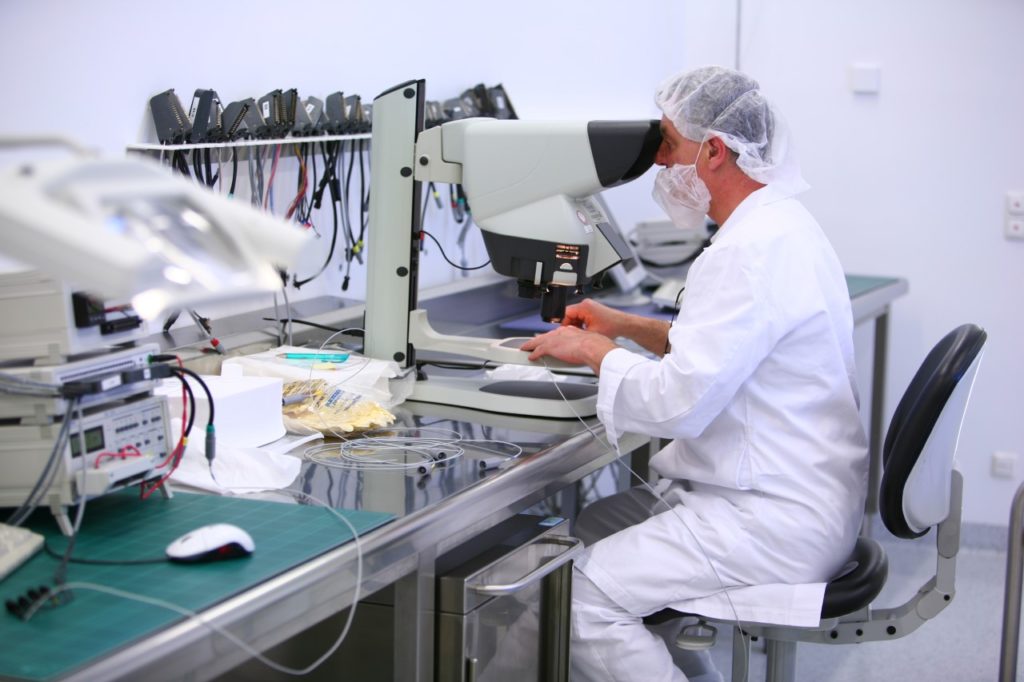The European Commission is committed to a new Circular Economy Action Plan-one of the main building blocks of the European Green Deal. But the Circular Economy drive will grind to a halt at the gates of the health care sector unless national or EU wide measures are undertaken to enable the new economy.
If the global health care sector were its own country, it would be the fifth largest greenhouse gas emitter on the planet. The health care sector generates 4.4% of global greenhouse gas emissions - more than double the emissions generated by the entire airline industry.
Pollution from hospitals, caused largely by wasteful hospital supply chains and reliance on disposable medical products, adversely impacts human health, resulting in hundreds of thousands of years of life lost annually, due to the impact of incineration and emissions from hospitals, according to recently published data by Professor Andrea MacNeill from the University of British Columbia, in the Journal Health Affairs.
Action now is critically important because hospitals pollute so much that they make us sick and are shortening life in much of the world, according to new data. As the European Union re-evaluates existing regulations with an eye toward incentivizing the Circular Economy, it should look to the 2017 Medical Device Regulation (MDR) as a way to cut senseless medical waste. The EU MDR was adopted 5 April 2017 and the date of full application is 26 May 2021.
Single-use devices in hospitals
Medical devices and the supply chain itself cause roughly half the greenhouse gas emissions footprint from hospitals. A leading factor: the sector’s appetite for the “take-make-waste” of single-use medical devices that “has resulted in environmental and public health damage, supply-chain vulnerability, and increased health care expenditures,” according to Professor MacNeill.
A deeper look into the environmental impact of using devices just once compared to those that are remanufactured, found striking conclusions. A life cycle assessment from Fraunhofer UMSICHT evaluating electrophysiology catheters (a diagnostic device used in the heart) found that the process to manufacture, transport and dispose of the product generated significantly more greenhouse gas emissions, ozone depletion, plastic waste, water acidification, and pollution linked to human illnesses such as respiratory inorganics and ionizing radiation than its remanufactured counterpart.
Use of remanufactured catheters reduced ozone depletion by almost 90% and cut greenhouse gas emissions in half. The greenhouse gas emissions of plastic manufacturing for the virgin catheters-a step that is avoided entirely in remanufacturing- accounts for more CO2 emissions than the entire remanufacturing process. This says nothing of the potential of potential supply chain resiliency benefits urgently needed as highlighted by COVID-19.
Remanufacturing in Europe
Device and supply shortages may be mitigated in the future by having medical devices remanufactured in Europe for a European health delivery sector, rather than forcing Europe to continue to rely on disposable, and allegedly always available, devices and supplies from Asia.
In Europe, remanufactured “single-use” medical devices, according to a 2017 EU law, must meet manufacturer standards and receive a CE mark ensuring they are as safe and as effective as “virgin” equipment. Remanufactured devices are required to be sterilized to the exact same standard as the original device. Already over 300 such medical devices carrying the CE mark for remanufacturing are on the market.
The are remanufactured in Europe creating green jobs. Given greater demand, medical device companies will build more remanufacturing facilities in Europe – making our supply chain more resilient and bringing circular manufacturing home rather than relying on international imports.
This simple switch to remanufactured devices lowers costs and environmental impact. If all catheters in Germany alone were remanufactured, the annual CO2 emissions would be lowered significantly, according to industry estimates. Given that this is only one device, and over 300 “single-use” devices are CE marked for remanufacturing, the potential for CO2 reduction across the EU are substantial and would take place immediately, when hospitals switch to remanufactured devices.
The opt-in clause
Use of the remanufactured devices is far more economical, saving hospitals and health systems 30 to 50% per device. Globally, the use of remanufactured devices saved health systems over €446M in 2019, according to the Association of Medical Device Reprocessors. This comes at a time that health systems worldwide are under enormous financial strain from responding to the Covid-19 pandemic.
The hold up? New EU Medical Device Regulations (MDR) and Common Specifications require EU ministries of health to “opt-in” to use remanufacturing. Even though remanufactured devices comply with the same standards as the original manufacturer, meaning they both must be CE marked, Article 17 requires national governments to pass legislation to allow their use.
The EU should move to strike the national “opt-in” requirement and instead allow for all remanufactured products across the EU. Given the urgency of the problem, in the meantime, Member States should act expeditiously to allow remanufactured medical devices.
Key stakeholders, including representatives of the European Commission, the European Parliament and the European Committee of the Regions, recognized the urgent need for extending the Circular Economy to the health care sector in a recent webinar, “Towards a More Circular, Sustainable and Economic Health care System in Europe.”
Belgium, Germany, and the Netherlands have already or are in the process of passing regulations to “opt-in.” But most Member States have yet to act. Given that our hospitals are making us sick and cause substantial greenhouse gas emissions, it is time for EU Ministries of Health to “opt-in” to the new regulations and “do no harm.”
By Dan Vukelich


